 "ttyymmnn" (ttyymmnn)
"ttyymmnn" (ttyymmnn)
09/23/2016 at 12:35 • Filed to: Planelopnik, planelopnik history
 10
10
 16
16
 "ttyymmnn" (ttyymmnn)
"ttyymmnn" (ttyymmnn)
09/23/2016 at 12:35 • Filed to: Planelopnik, planelopnik history |  10 10
|  16 16 |
Welcome to This Date in Aviation History , getting of you caught up on milestones, important historical events and people in aviation from September 21 through September 23.
!!! UNKNOWN CONTENT TYPE !!!
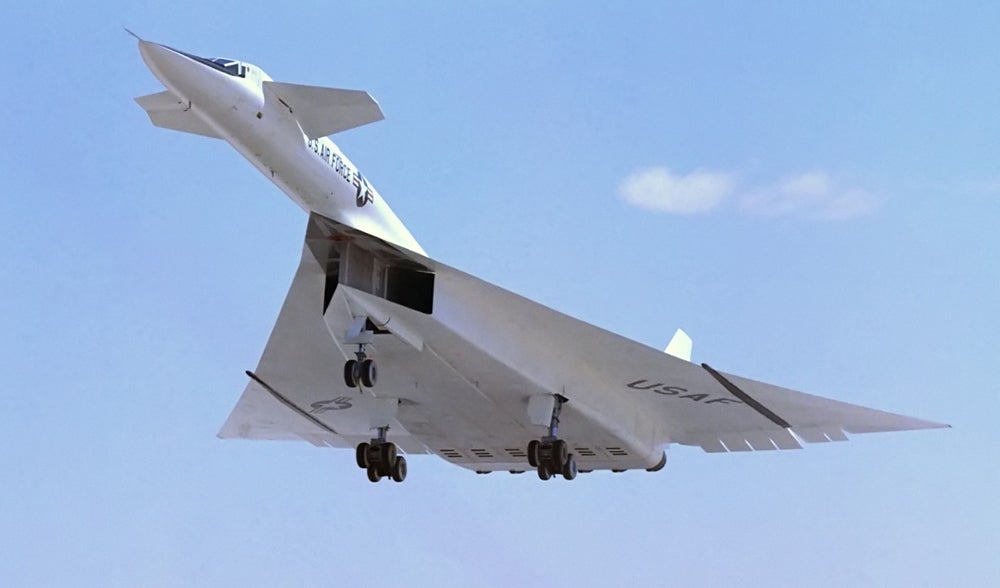
September 21, 1964 – The first flight of the North American XB-70 Valkyrie. Strategic bombing came of age in the Second World War, and it culminated in the !!!error: Indecipherable SUB-paragraph formatting!!! on Hiroshima and Nagasaki that finally brought an end to the most destructive war in human history. The Nuclear Age had dawned, but the !!!error: Indecipherable SUB-paragraph formatting!!! (ICBM) that we know and fear today had not yet become a reality. Attacking the enemy with nuclear weapons was still a mission for long-range bombers, but early postwar bombers were still susceptible to fighters and interceptors. But, with the advent of the supersonic bomber, it was hoped that these planes could fly higher and faster than any interceptor could reach, and such was the genesis of the radical North American XB-70 Valkyrie. However, by the time the Valkyrie finally took to the air, the ICBM had taken over the role of nuclear attack, and the Valkyrie became an anachronism, a bomber for an earlier age. Beginning in 1955, the US Air Force issued a requirement for a new bomber that would have the payload capacity of the !!!error: Indecipherable SUB-paragraph formatting!!! but the supersonic speed of the !!!error: Indecipherable SUB-paragraph formatting!!! . Various radical designs were considered, but the rapid development of supersonic science pointed to a large delta wing being the most efficient shape for such a bomber. Large canards at the front of the fuselage would help control the giant bomber. Initial plans were for a bomber that would fly to the target, drop the bomb from lower altitude and “scoot” away from the blast at supersonic speed, but engineers discovered that, from the standpoint of fuel use versus miles traveled, it was more efficient for the aircraft to spend its entire mission at top speed. In the case of the XB-70, that top speed would be Mach 3 at 70,000 feet, propelled by six !!!error: Indecipherable SUB-paragraph formatting!!! afterburning turbojets, all mounted side by side. That sort of performance generated a lot of heat so, to cool the aircraft, fuel was pumped through heat exchangers before flowing to the engines. North American engineers also discovered a way to make use of a phenomenon known as !!!error: Indecipherable SUB-paragraph formatting!!! , where the shock wave made by the plane could help create lift. They added drooping wingtips to take full advantage of this effect, with the added benefit of decreasing drag. While the XB-70 would be unreachable by any fighters, advances in air-to-air missiles suddenly put the whole project in doubt. Air Force doctrine changed from high altitude supersonic bombing to low altitude penetration. Thus, the Valkyrie would have to be flown at low levels, where it was barely faster than the B-52, while carrying a smaller payload. Ultimately, the XB-70 became a Cold War Era political football, the stuff of campaign promises and political bargaining, and the project was canceled in 1961.
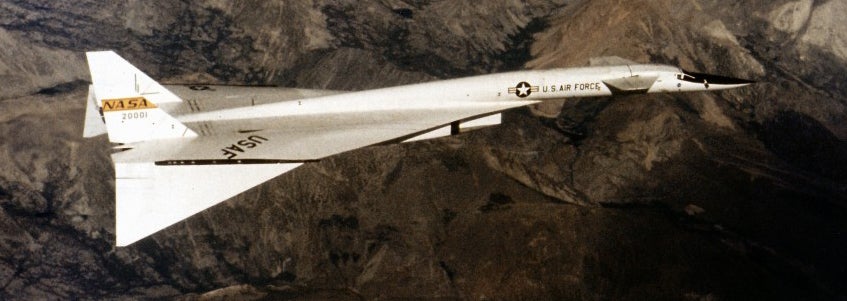
NASA XB-70 in flight. Note the drooping wingtips.
With no real bombing mission for the plane to perform, the XB-70 became a research testbed for supersonic flight. Of the two that were built, Valkyrie No. 2 was lost in a mid-air collision during a formation flight photo shoot for engine manufacturer GE that caused the death of two pilots and the serious injury of a third. Aircraft No. 1 continued to serve its research role, with its final supersonic flight taking place in February 1969 when it was flown to the National Museum of the United States Air Force in Dayton, Ohio.
(US Air Force photo; NASA photo)
!!! UNKNOWN CONTENT TYPE !!!
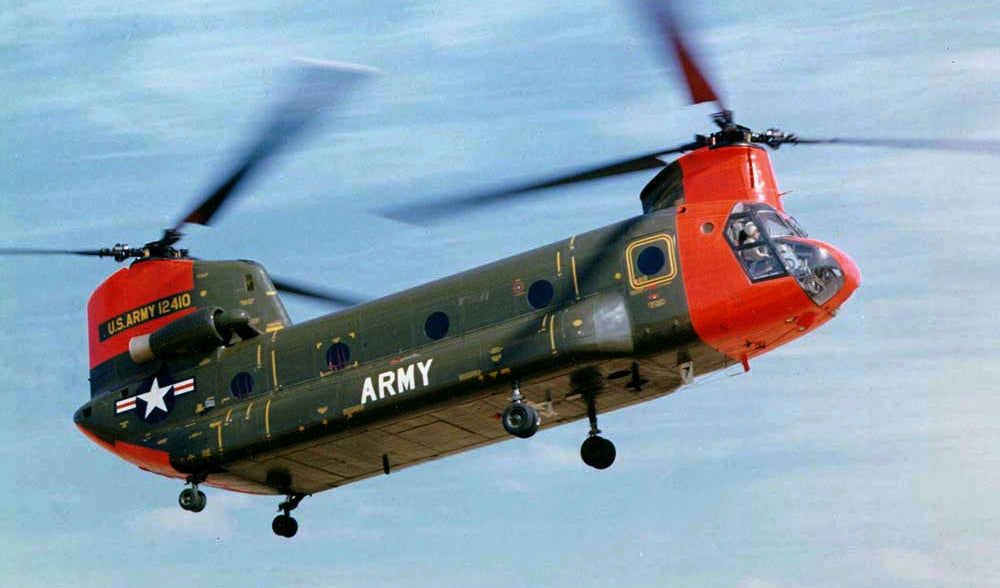
September 21, 1961 – The first flight of the Boeing CH-47 Chinook. When the US Army placed an order for the !!!error: Indecipherable SUB-paragraph formatting!!! in 1943, it was the beginning of a relationship with rotor wing aircraft that would eventually give rise to the concepts of !!!error: Indecipherable SUB-paragraph formatting!!! that were honed in the Vietnam War. But it soon became clear that, while the helicopter was good at moving soldiers, the Army needed something bigger to lift artillery, heavy equipment, and larger numbers of soldiers. For a time, that job was done by the !!!error: Indecipherable SUB-paragraph formatting!!! , but work began in 1957 to procure a modern, turbine-powered helicopter as a replacement for the Mojave that would provide even more lifting power and speed than the pair of radial engines used in the Mojave could supply. The Army was of two minds on the project. One group imagined the new helicopter as being able to carry a full squad of 15 soldiers, while the other group wanted a much larger helicopter capable of moving artillery pieces and other battlefield supplies. The second group carried the day, and Vertol (formerly !!!error: Indecipherable SUB-paragraph formatting!!! , an early advocate of tandem helicopter design, which was acquired by Boeing in 1960) began working on a tandem helicopter, with two rotors providing lift for heavy loads. The first helicopter to come out of this requirement was the YHC-1A, but it was deemed too small for the Army, though it was eventually adopted by the US Marine Corps as the !!!error: Indecipherable SUB-paragraph formatting!!! in 1962. Its smaller size would be an advantage for the carrier-based Marines. The Army requested a larger helicopter, So Boeing Vertol enlarged the YCH-1A into the YCH-1B, which would become the CH-47 Chinook, following the tradition of naming Army helicopters after Native American tribes. The new helicopter was powered by two !!!error: Indecipherable SUB-paragraph formatting!!! turboshaft engines each producing 4,733 hp and turning counter-rotating propellers, an arrangement that would eliminate the need for an anti-torque rotor. The two engines provided the Chinook with a top speed of 170 knots, faster than the utility and attack helicopters of the day. They also supplied enough power to carry up to 55 troops or 28,000 pounds of cargo.
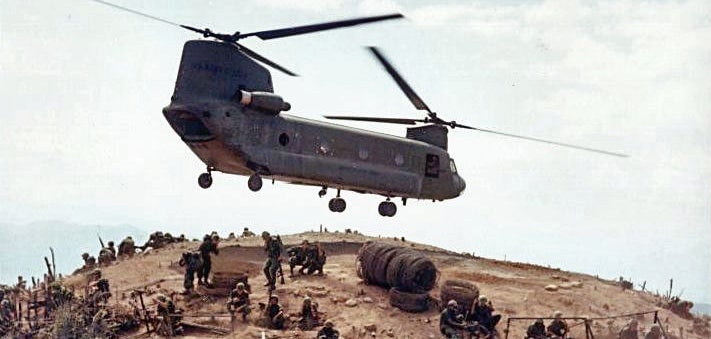
CH-47 supporting troops in Vietnam in 1967
The Chinook entered service with the Army in Vietnam 1965, where the helicopter became invaluable in the supply of forward bases and was used to haul artillery pieces to remote mountaintop fire bases. Continuously upgraded since its introduction, the Chinook now has newer, more powerful Lycoming engines (now produced by Honeywell), composite rotor blades, redundant electrical systems and advanced avionics. Not only was the Chinook popular with the US Army, but it was exported to 23 nations and remains in production, with over 1,200 aircraft built. Along with its fixed-wing heavy lifting counterpart, the
!!!error: Indecipherable SUB-paragraph formatting!!!
, the CH-47 is one of the few aircraft that has seen a production and service life of over 50 years.
(US Army photos)
!!! UNKNOWN CONTENT TYPE !!!
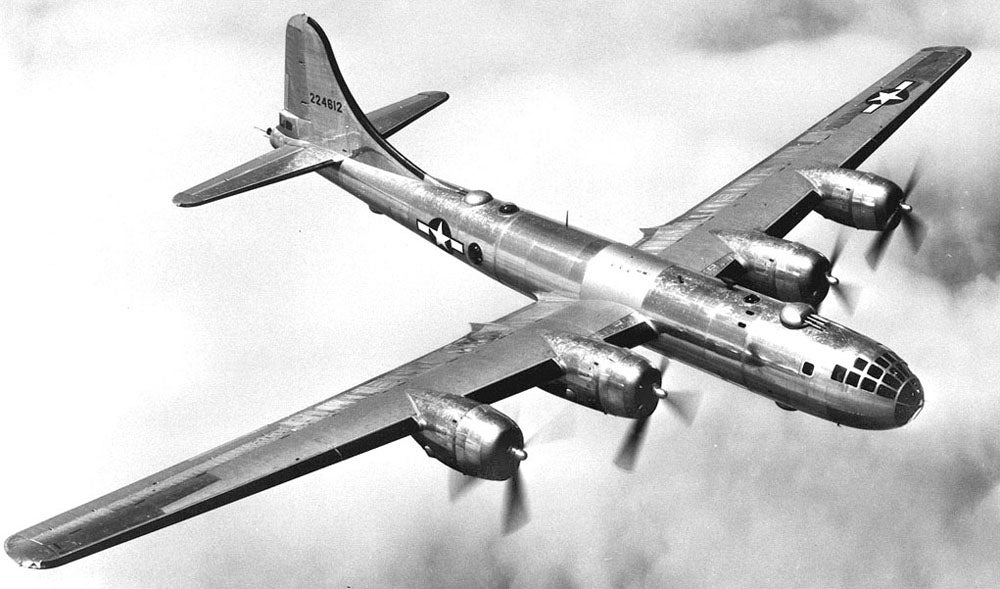
September 21, 1942 – The first flight of the Boeing B-29 Superfortress. In the years leading up to WWII, there were two main schools of thought about how best to use bombers. One was !!!error: Indecipherable SUB-paragraph formatting!!! , which sought to defeat the enemy by destroying both their means of production of war materiel and the morale of the civilian population. The other was !!!error: Indecipherable SUB-paragraph formatting!!! , in which bombers worked more closely with ground troops to carry out specific battlefield tactics and destroy targets of immediate military value. While Germany, with their !!!error: Indecipherable SUB-paragraph formatting!!! warfare, became almost wholly invested in the theories of tactical bombing, America and her allies followed the doctrines of strategic bombing, particularly the theories espoused by Italian general !!!error: Indecipherable SUB-paragraph formatting!!! and American general !!!error: Indecipherable SUB-paragraph formatting!!! . To that end, the Americans produced ever larger bombers, capable of carrying large loads of bombs at great distances. By the time the Superfortress entered service in 1944, it was the most technologically advanced bomber of its era, and even though it arrived late in the war, it had a profound effect on the later stages of the Pacific campaign. Boeing’s work on a pressurized bomber began all the way back in 1938 as an independent project. Then, in 1939, at the urging of Charles Lindbergh, the Army began to pursue a so-called “superbomber,” one that would be capable of carrying 20,000 lbs of bombs 2,667 miles at a speed of 400 mph, and Boeing’s previous work would form the basis for their entry into the competition to produce the new bomber. The competition was between Boeing, Consolidated, Lockheed and Douglas, and Boeing received an order for two prototypes in August 1940.
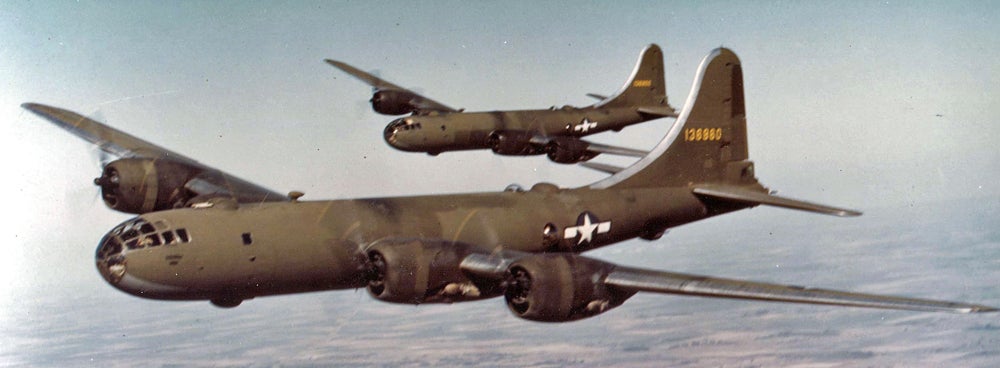
YB-29 prototypes in olive drab livery
By May of 1941, that order was increased to 250 production bombers, and then to 500 bombers in January 1942. The !!!error: Indecipherable SUB-paragraph formatting!!! , a more traditional design that was not selected in the initial competition, was ordered into production in small numbers should the production of the B-29 run into difficulties. And as good as the B-29 would eventually become, serious problems with the !!!error: Indecipherable SUB-paragraph formatting!!! radial engines plagued the early development of the new bomber. Those problems would eventually be ironed out, but it wasn’t until the introduction of !!!error: Indecipherable SUB-paragraph formatting!!! engines after the war that the engine problems were entirely solved. By the time the B-29 was being developed, piston-powered aircraft were reaching the zenith of technological advancement, and the B-29 was at the forefront. In addition to the adoption of pressurization, the Superfortress was armed with up to ten !!!error: Indecipherable SUB-paragraph formatting!!! .50 caliber machine guns in motorized turrets that were operated remotely. With onboard targeting computers and a system that linked the guns together, one gunner could control two or more sets of guns to focus the greatest amount of firepower against enemy fighters. And that was only if the fighters could reach them. Flying at nearly 32,000 feet and at speeds of up to 350 mph, the B-29 was almost unreachable by most Japanese fighters. The Army Air Forces originally intended the B-29 to be used against Germany, but delays in production meant that it was flown exclusively in the Pacific Theater, where its tremendous range proved to be an asset on long flights over the open waters of the Pacific Ocean. After the war, the Superfortress went on to a lengthy career and flew bombing missions in the Korean War. As the !!!error: Indecipherable SUB-paragraph formatting!!! , it served as the basis for one of the first aerial refueling tankers, and the upgraded !!!error: Indecipherable SUB-paragraph formatting!!! served until 1965, primarily in the reconnaissance role. It also formed the basis for the !!!error: Indecipherable SUB-paragraph formatting!!! , the !!!error: Indecipherable SUB-paragraph formatting!!! passenger airliner and the !!!error: Indecipherable SUB-paragraph formatting!!! series of large cargo aircraft. Though nearly 4,000 were produced, only two remain flying. (US Air Force photos)
!!! UNKNOWN CONTENT TYPE !!!
Short Takeoff
!!! UNKNOWN CONTENT TYPE !!!

September 21, 2012 – The last flight of a Space Shuttle on the Shuttle Carrier Aircraft (SCA).
After the end of the
!!!error: Indecipherable SUB-paragraph formatting!!!
in 2011, the retired Shuttles were distributed to various museums and sites around the country.
Endeavour
was the last to be delivered and, during its ferry flight, the SCA made low passes over Florida’s Space Coast and NASA centers in Mississippi and Louisiana before landing in Houston to refuel. Next, they flew over the
!!!error: Indecipherable SUB-paragraph formatting!!!
in New Mexico, over Tucson, Arizona as a tribute to Congresswoman
!!!error: Indecipherable SUB-paragraph formatting!!!
, then on to
!!!error: Indecipherable SUB-paragraph formatting!!!
in California where many Shuttle landings took place. On its final day, the SCA and
Endeavour
made low level passes over Sacramento, San Francisco, Silicon Valley, and Los Angeles, before landing at Los Angeles International Airport.
(NASA Photo)
!!! UNKNOWN CONTENT TYPE !!!
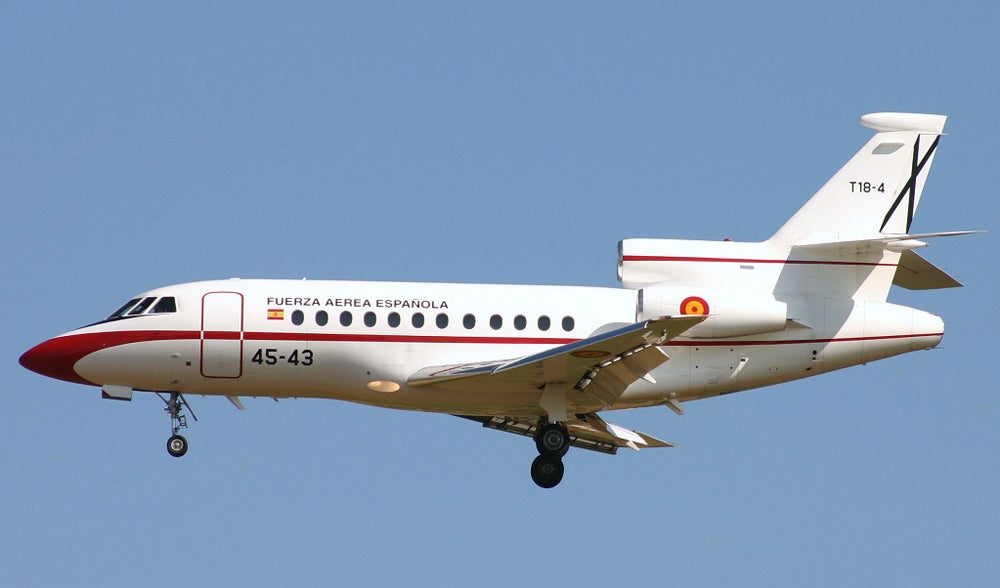
September 21, 1984 – The first flight of the Dassault Falcon 900,
a business jet produced by
!!!error: Indecipherable SUB-paragraph formatting!!!
of France and, with its sister ship the
!!!error: Indecipherable SUB-paragraph formatting!!!
, the only trijets currently in production. The Falcon 900 is the continuation of the line of Falcon jets that began with the
!!!error: Indecipherable SUB-paragraph formatting!!!
and continued with the
!!!error: Indecipherable SUB-paragraph formatting!!!
. With a crew of 2, the Falcon 900 can accommodate up to 19 passengers, and its three
!!!error: Indecipherable SUB-paragraph formatting!!!
turbofans provide a top speed of Mach 0.87 and a range of over 4,000 miles. More than 500 have been built since production began in 1984, and it remains in production today.
(Photo by Luc Verkuringen via
!!!error: Indecipherable SUB-paragraph formatting!!!
)
!!! UNKNOWN CONTENT TYPE !!!

September 21, 1945 – The first flight of the Hawker Sea Fury, a fighter initially developed for the Royal Air Force during WWII. With the end of WWII, the RAF canceled their order, but the fighter was then developed into a carrier-based version for the Royal Navy. Powered by a !!!error: Indecipherable SUB-paragraph formatting!!! 18-cylinder radial engine, the Sea Fury was the last propeller-driven fighter to enter service with the Royal Navy and, with a top speed of 460 mph, one of the fastest single piston-engined aircraft ever built. Introduced in 1947 and sold to nine export countries, the Sea Fury saw action during the Korean War, and was flown by the Fuerza Aérea Revolucionaria (Revolutionary Air Force) during the !!!error: Indecipherable SUB-paragraph formatting!!! of 1961. A total of 864 were produced, and the last Sea Furys were retired by the Burmese Air Force in 1968. (Photo by Julian Herzog via !!!error: Indecipherable SUB-paragraph formatting!!! )
!!! UNKNOWN CONTENT TYPE !!!
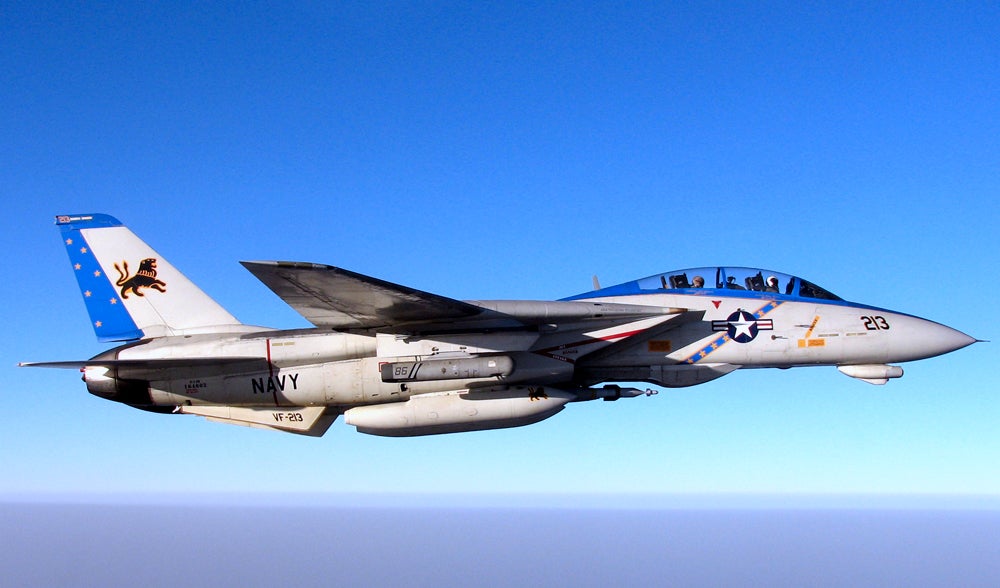
September 22, 2006 – The retirement of the Grumman F-14 Tomcat. Developed after the failure of the !!!error: Indecipherable SUB-paragraph formatting!!! carrier-based interceptor, the F-14 became the US Navy’s primary air superiority fighter and fleet defense aircraft. Although a new design, it kept the engines, weapons system and swing wing of its unsuccessful predecessor. The Tomcat entered service with the US Navy in 1974, replacing the !!!error: Indecipherable SUB-paragraph formatting!!! , and served as the Navy’s principal air superiority fighter while also performing fleet defense and reconnaissance missions. With the arrival of the !!!error: Indecipherable SUB-paragraph formatting!!! in 1999, the Tomcat was phased out, with its official retirement taking place in 2006 after 32 years of service. Many Tomcats reside in museums, but retired operational F-14s were scrapped by the US government to prevent their spare parts being obtained by Iran. (US Navy Photo)
!!! UNKNOWN CONTENT TYPE !!!
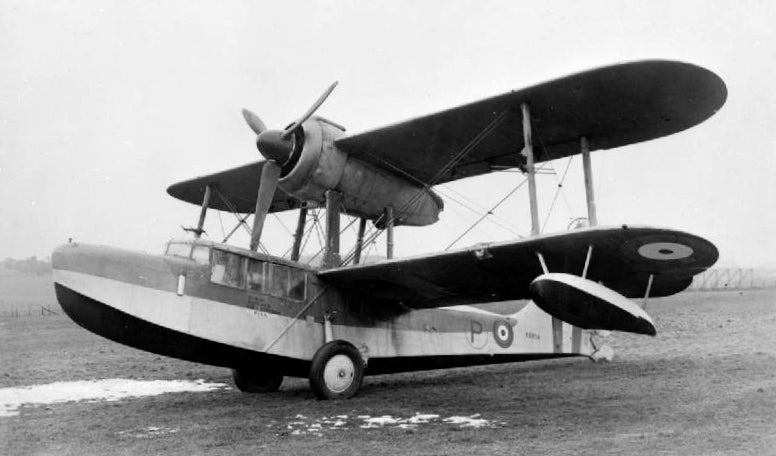
September 23, 1938 – The first flight of the Supermarine Sea Otter,
an amphibian aircraft developed for the Royal Navy and Royal Air Force before WWII and the last biplane to be flown by either service. The Sea Otter was a development of the earlier
!!!error: Indecipherable SUB-paragraph formatting!!!
, with the principal difference being the placement of a single
!!!error: Indecipherable SUB-paragraph formatting!!!
radial engine in the center of the upper wing in a puller configuration rather than between the wings as a pusher. The Sea Otter entered service in 1942 and carried out air-sea rescue missions and maritime reconnaissance, while postwar aircraft flew small numbers of passengers and carried cargo. Just under 300 were built before the end of the war halted production.
(Imperial War Museum photo)
!!! UNKNOWN CONTENT TYPE !!!
Recent Aviation History Posts
!!! UNKNOWN CONTENT TYPE !!!
!!! UNKNOWN CONTENT TYPE !!!
!!! UNKNOWN CONTENT TYPE !!!
!!! UNKNOWN CONTENT TYPE !!!
!!! UNKNOWN CONTENT TYPE !!!
If you enjoy these Aviation History posts, please let me know in the comments. And if you missed any of the past articles, you can find them all at !!!error: Indecipherable SUB-paragraph formatting!!! .
!!! UNKNOWN CONTENT TYPE !!!
 MonkeePuzzle
> ttyymmnn
MonkeePuzzle
> ttyymmnn
09/23/2016 at 13:28 |
|
and odd duck my brother shared with me today, relevant with the chinook’s first flight

http://www.aviastar.org/helicopters_eng/bvertol_347.php
 ttyymmnn
> MonkeePuzzle
ttyymmnn
> MonkeePuzzle
09/23/2016 at 13:35 |
|
Fascinating! Thank you.
 Mondial goes to 11
> ttyymmnn
Mondial goes to 11
> ttyymmnn
09/23/2016 at 15:03 |
|
The CH-37 is nuts! Those radial engine pods look ridiculous.
I can’t believe it’s been four years since the last shuttle piggyback flight. My entire office took an extended lunch to watch it.
 ttyymmnn
> Mondial goes to 11
ttyymmnn
> Mondial goes to 11
09/23/2016 at 15:09 |
|
There is an old show on TV called “The Lieutenant.” It’s about a young LT in the Marine Corps, and was filmed in the early 60s. It’s pretty good, and was written by Gene Roddenberry. There was at least one episode that had a CH-37 in it, and another that focused on USMC Phantom pilots. It’s a neat look at old military hardware.
That SCA flight came through Austin on this flight, and I’ll be forever pissed that I didn’t know it was coming. I would have kept my kids out of school to go see it. It’s a piece of history. I did get to see the Shuttle and the SCA one time when I was living in Houston back in the early 90s. I was driving down the interstate one day, and looked up to see it flying along a few miles away. I almost wrecked trying to watch it.
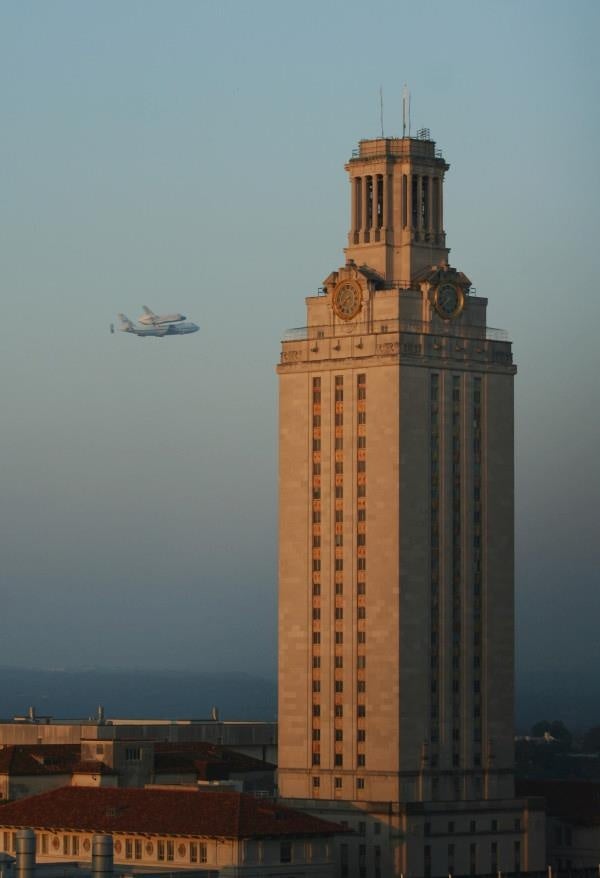
 You can tell a Finn but you can't tell him much
> ttyymmnn
You can tell a Finn but you can't tell him much
> ttyymmnn
09/23/2016 at 15:12 |
|
Rather hilariously the Chinook is still faster than our attack helicopters. Turns out you can’t cheat physics. Having a single rotor disk seriously limits the top speed of a helicopter because of the phenomenon called retreating blade stall . Since the Chinook has two main rotors and they are counter rotating that means there is even lift on both sides of the helicopter regardless of its forward airspeed. Smarter Every Day has a very good series regarding helicopter flight and the physics involved in it.
...the Sea Fury was the last propeller-driven fighter to enter service with the Royal Navy and, with a top speed of 460 mph, one of the fastest single piston engined aircraft ever built.
I would suggest adding piston in your comment about the Sea Fury’s speed. There have been some single engined aircraft since that are a bit faster.
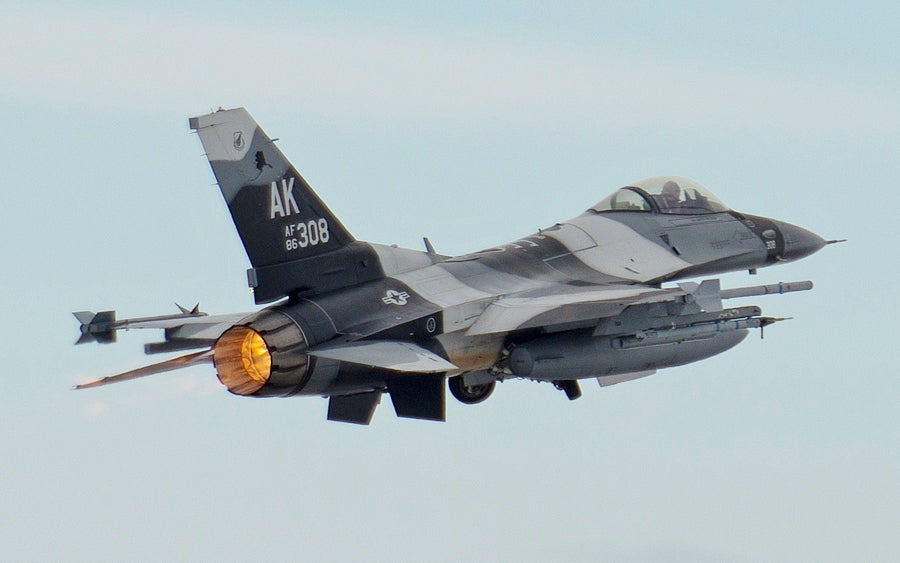
 ttyymmnn
> You can tell a Finn but you can't tell him much
ttyymmnn
> You can tell a Finn but you can't tell him much
09/23/2016 at 15:23 |
|
I have seen that Smarter Every Day video, and it’s very good. All his videos are good. I read a very interesting essay in Air & Space Magazine a few years ago written by a CH-46 pilot. He was flying off the deck of the carrier on a supply mission, and his helo was overloaded. As he took off, he began to sink towards the ocean rapidly. At about the last second, he remembered something from his training, which was to kick rudder and yaw the chopper to one side. That allowed both rotors to provide equal lift, since the rear rotor was now out of the effects of the forward rotor. Here’s the article. It’s a great read.
http://www.airspacemag.com/military-aviation/above-amp-beyond-milk-run-17501799/?all
And thanks for the catch on the Sea Fury. It absolutely needs to be clarified.
 Mondial goes to 11
> ttyymmnn
Mondial goes to 11
> ttyymmnn
09/23/2016 at 15:37 |
|
That’s a fantastic photo and I’ll check out the show. Thanks!
 ttyymmnn
> Mondial goes to 11
ttyymmnn
> Mondial goes to 11
09/23/2016 at 15:42 |
|
To be clear, not my photo. I missed the whole thing. But yes, it is a terrific photograph. That was early in the morning, after the SCA left Ellington Field in Houston and headed west. I think it came through at about 7:30 am.
 You can tell a Finn but you can't tell him much
> ttyymmnn
You can tell a Finn but you can't tell him much
> ttyymmnn
09/23/2016 at 15:48 |
|
Wow, that is a crazy story, thanks for that. It seems kind of strange that they wouldn’t have weights on the pallets for loading purposes.
 ttyymmnn
> You can tell a Finn but you can't tell him much
ttyymmnn
> You can tell a Finn but you can't tell him much
09/23/2016 at 15:57 |
|
I think the weight of the pallets was the least of his problems. It was his miscalculation of the weight of a gallon of milk. Air & Space Mag is a terrific publication. And, as far as I know, it’s all free on the Net. Lots of great stories, and the ones like these are often the best. This one is perhaps my favorite.
http://www.airspacemag.com/military-aviation/i-got-those-old-beat-orion-blues-180949487/
 You can tell a Finn but you can't tell him much
> ttyymmnn
You can tell a Finn but you can't tell him much
> ttyymmnn
09/23/2016 at 18:50 |
|
I meant gross weight for the loaded pallets. But yeah, the weight of the pallets wasn’t his problem when his weight/gallon was off by ~30%.
 user314
> ttyymmnn
user314
> ttyymmnn
09/23/2016 at 21:06 |
|

 ttyymmnn
> user314
ttyymmnn
> user314
09/23/2016 at 21:32 |
|
That’s awesome. Where did you find that?
 gmporschenut also a fan of hondas
> MonkeePuzzle
gmporschenut also a fan of hondas
> MonkeePuzzle
09/23/2016 at 21:34 |
|
neat
 user314
> ttyymmnn
user314
> ttyymmnn
09/23/2016 at 21:58 |
|
It’s reprinted in Valkyrie - North American’s Mach 3 Superbomber which I highly recommend. It covers not only the XB-70, but the programs and proposals that came before it, and some of its contemporaries, like the XF-108 and YF-12.
 ttyymmnn
> user314
ttyymmnn
> user314
09/23/2016 at 23:11 |
|
Thanks for the link!